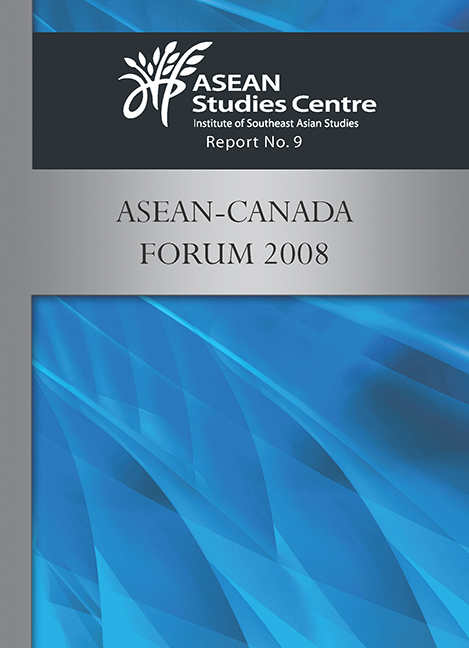Book contents
- Frontmatter
- Dedication
- Contents
- Introduction
- I Regional Economic Integration: ASEAN and Canadian Perspectives
- II Background Papers
- 1 AFTA–NAFTA: Trade and Investment Issues
- 2 Trade and Investment Issues in ASEAN Economic Integration
- 3 Institutional Development in ASEAN
- 4 Governance Issues in NAFTA
- 5 Different Approaches to Dispute Resolution under ASEAN
- 6 Dispute Resolution under NAFTA: Evolution and Stagnation
- 7 Winners and Losers in ASEAN Economic Integration: A Perspective from Vietnam
- 8 Winners and Losers in International Economic Integration: The Distributional Effects of NAFTA
- 9 Cross-border Labour Migration in ASEAN: Issues and Challenges
- 10 Labour Market Integration within NAFTA
- Annex I: Programme of the Forum
- Annex II: List of Participants
- Annex III: Rules-based Governance
2 - Trade and Investment Issues in ASEAN Economic Integration
from II - Background Papers
Published online by Cambridge University Press: 21 October 2015
- Frontmatter
- Dedication
- Contents
- Introduction
- I Regional Economic Integration: ASEAN and Canadian Perspectives
- II Background Papers
- 1 AFTA–NAFTA: Trade and Investment Issues
- 2 Trade and Investment Issues in ASEAN Economic Integration
- 3 Institutional Development in ASEAN
- 4 Governance Issues in NAFTA
- 5 Different Approaches to Dispute Resolution under ASEAN
- 6 Dispute Resolution under NAFTA: Evolution and Stagnation
- 7 Winners and Losers in ASEAN Economic Integration: A Perspective from Vietnam
- 8 Winners and Losers in International Economic Integration: The Distributional Effects of NAFTA
- 9 Cross-border Labour Migration in ASEAN: Issues and Challenges
- 10 Labour Market Integration within NAFTA
- Annex I: Programme of the Forum
- Annex II: List of Participants
- Annex III: Rules-based Governance
Summary
Introduction
The Association of Southeast Asian Nations (ASEAN) has gone a long way in opening up the region to greater trade and foreign direct investment (FDI) from the rest of the world. The competitive pressure arising from the process and the region's response to meet the challenge paved the way to the region's economic integration. Prior to the 1990s, this was considered by many as impossible, especially if one looks at the member economies' economic structures that are more competitive rather that complementary. With the exception of Singapore, the economies have similar resource endowments and levels of technological development; thus, resulting in the production and export of similar primary and labour-intensive products. They are also all heavily dependent on the developed countries, particularly the United States, Europe and Japan, for their export markets and sources of foreign direct investment and technology. These factors were perceived to make economic integration in the region difficult, if not impossible.
From the initial goal of establishing the ASEAN Free Trade Area in 1992, ASEAN is now aiming to deepen economic integration through the ASEAN Economic Community (AEC) by 2015, a timeline which was initially set at 2020. The AEC is one of the three pillars of an ASEAN Community embodied in the Declaration of ASEAN Concord II (also known as Bali Concord) adopted during the 2003 ASEAN Summit. The AEC is characterized as a single market and production base, with free flow of goods, services, investment, labour and capital. As an initial step towards the goal, the ASEAN leaders signed the Framework Agreement for the Integration of the Priority Sectors during the ASEAN Summit in 2004. The agreement outlined the steps to be taken to accelerate the integration of eight priority sectors and three services sectors. Three years later, during the ASEAN Summit in November 2007, the ASEAN leaders signed the Declaration on the ASEAN Economic Community Blueprint, the master plan that guides ASEAN towards achieving AEC by 2015.
- Type
- Chapter
- Information
- ASEAN-Canada Forum 2008 , pp. 27 - 54Publisher: ISEAS–Yusof Ishak InstitutePrint publication year: 2010



